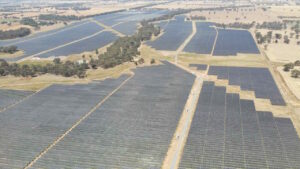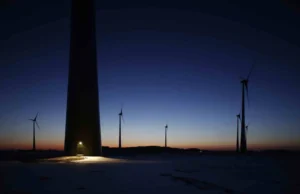In its latest attempt to prop up Australia’s fossil fuel industry, the Turnbull government says it will seek to remove restrictions that prevent the $10 billion Clean Energy Finance Corporation from supporting investment in carbon capture and storage (CCS) technologies.
The move was announced by energy minister Josh Frydenberg on Tuesday, in what he painted as a “technology-neutral, non ideological” approach to national energy policy.
In a statement, Frydenberg said that CCS was cited by both the International Energy Agency and the Intergovernmental Panel on Climate Change as critically important for the world to meet its emission reductions targets.
But both those citations carry heavy caveats – only if the technology works, and only if the costs fall significantly. So far, there has been little evidence of either, with less than a handful of CCS projects actually capturing emissions from power generators and at great expense, despite years of investment.

The Coalition has waged a war against renewable energy since its election in 2013, canning the carbon price, seeking to abolish and then cut the 2020 renewable energy target, and seeking at various points to close both the CEFC and the Australian Renewable Energy Agency, before slashing ARENA’s funding.
That war has intensified since the state-wide blackout in South Australia last September, even though that, and subsequent events in South Australia and other states, have been shown to be the fault of network problems, software issues, storms and poor grid management and in some cases, failing fossil fuel generators.
Frydenberg claims that CCS is a “proven technology” that is being deployed globally, with 17 large-scale commercial CCS facilities already in operation storing around 30 million tonnes per annum of carbon dioxide.
This included the Gorgon LNG project in Western Australia, which will soon become one of the world’s largest CCS projects when it begins sequestering up to 4 million tonnes per annum in carbon dioxide in the coming year.
It is true that CCS is given a better chance of success in industrial processes rather than energy markets, simply because of the plunging cost of renewable energy and battery storage.
 BNEF puts the estimated cost of new coal plants at double the cost of wind and solar, at between $125/MWh and $169/MWh for “ultra-super critical” coal plants, and the cost for coal with carbon capture would likely double again, to around $350/MWh.
BNEF puts the estimated cost of new coal plants at double the cost of wind and solar, at between $125/MWh and $169/MWh for “ultra-super critical” coal plants, and the cost for coal with carbon capture would likely double again, to around $350/MWh.
Even with government de-risked finance, coal fired power stations with CCS would cost around $A216/MWh.
This compares to the cost of $55-$80/MWh for new wind and solar plants, with costs falling fast.
“CCS is a pre-commercial technology, so its hard to see how it fits within the CEFC’s mandate, or how they would practically be able to deploy any capital into a project, which would invariably be much higher risk than a bank like entity should be willing to take,” BNEF analyst Kobad Bhavnagri said.
This compares to the cost of $55-$80/MWh for new wind and solar plants, with costs falling fast.
As Bob Burton wrote in February, all the existing coal plant CCS units come with big price tags, while two out of three suffer significant problems, so much so that “the technology is fast becoming the orphan child of 1990’s coal utility thinking.”
The flagship CCS project for power generation is the US Kemper project, which turned out to be such a basket case and ended up costing more than $US7.4 billion ($A10 billion) – more tan twice the budgeted amount – before the owners considered whether to not burn coal because gas was so cheap.
Other projects include Petra Nova and Boundary Dam in north America, but these are small and are mostly focused on re-injecting the C02 into oil fields so that developers can extract more oil.
CCS is still regarded as a potential solution in industrial processes, such as iron and steel production, cement production and natural gas processing, even though others have pointed out that renewable energy could also make inroads into those processes.
However, BNEF’s Bhavnagri says the overall rationale given by the government for this change is sound, given there is no viable way to achieve near total decarbonisation with the current suite of clean technologies.
“No matter how cheap batteries get, they cannot viably provide inter-seasonal, or even intra-month or intra-week storage, and they will not decarbonise steel making or chemicals processing,” he says. “Without a huge new technological breakthrough, we need CCS to get to 2 degrees.”
Given the poor economics of CCS technology, it is difficult to see how the CEFC can provide finance for any such projects and meet the government’s benchmark returns, which requires it to make an overall profit significantly above the government bond rate.
As Ian Dunlop, the former chair of the Australian Coal Association, and now an activist, wrote in his submission to the government’s climate change policy review, the government’s “technology neutral” approach – first outlined by Turnbull in February – ignores numerous “inconvenient” realities.
“Years of research have failed to establish the basis for CCS expansion at scale. CCS works where emissions are stored in depleted oil and gas reservoirs, which the oil industry has practised for decades,” Dunlop writes.
“Storage in other types of geological structures is far harder. The substantial additional costs of CCS again reduce coal’s competitiveness, particularly if you refuse to price carbon, as the government are doing. CCS will be useful at the margin, but it will not save fossil fuels from their inevitable demise.”
The CEFC later issued a statement that suggested it was unlikely to invest in CCS for power generation, but could consider it for industrial purposes.
“The CEFC is committed to transforming clean energy investment to lower Australia’s carbon emissions. Under the CEFC Act, our investments include renewable energy, energy efficiency and low emissions technologies. To date, we have invested more than $3.3 billion in eligible clean energy projects, with a total project value of $8.3 billion, while also delivering a positive return for the taxpayer.
“In addition to potential applications in the power sector, CCS can also be used in the industrial sector to capture emissions from chemical processes, as well as fugitive emissions. There are some industrial processes for which there are currently very few alternatives to reducing emissions, making CCS an important technology if these sectors are to achieve deep cuts in emissions.
“The majority of existing large-scale CCS projects globally are in the industrial sector, including in natural gas, fertiliser, hydrogen, and iron and steel making. In Australia, there are several industrial pilot CCS projects either in operation or at a planning stage.
“The CEFC receives a steady flow of potential projects relating to a diverse range of clean energy technologies. We are in a continuous process of receiving and reviewing new project proposals and investing in eligible commercial projects.”
Frydenberg says the legislation will be introduced into parliament on Wednesday, but it will need support from most of the independent Senators.










